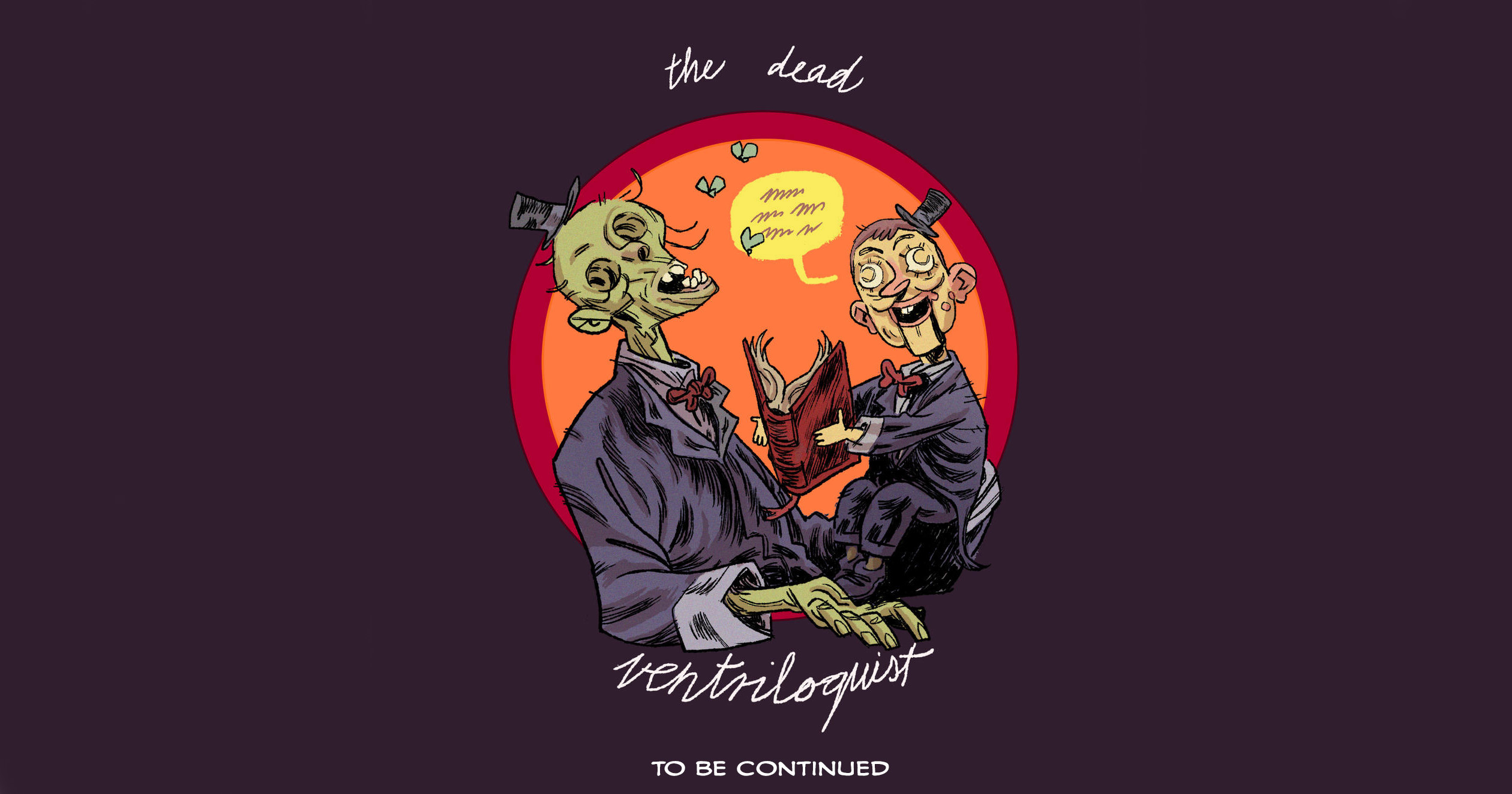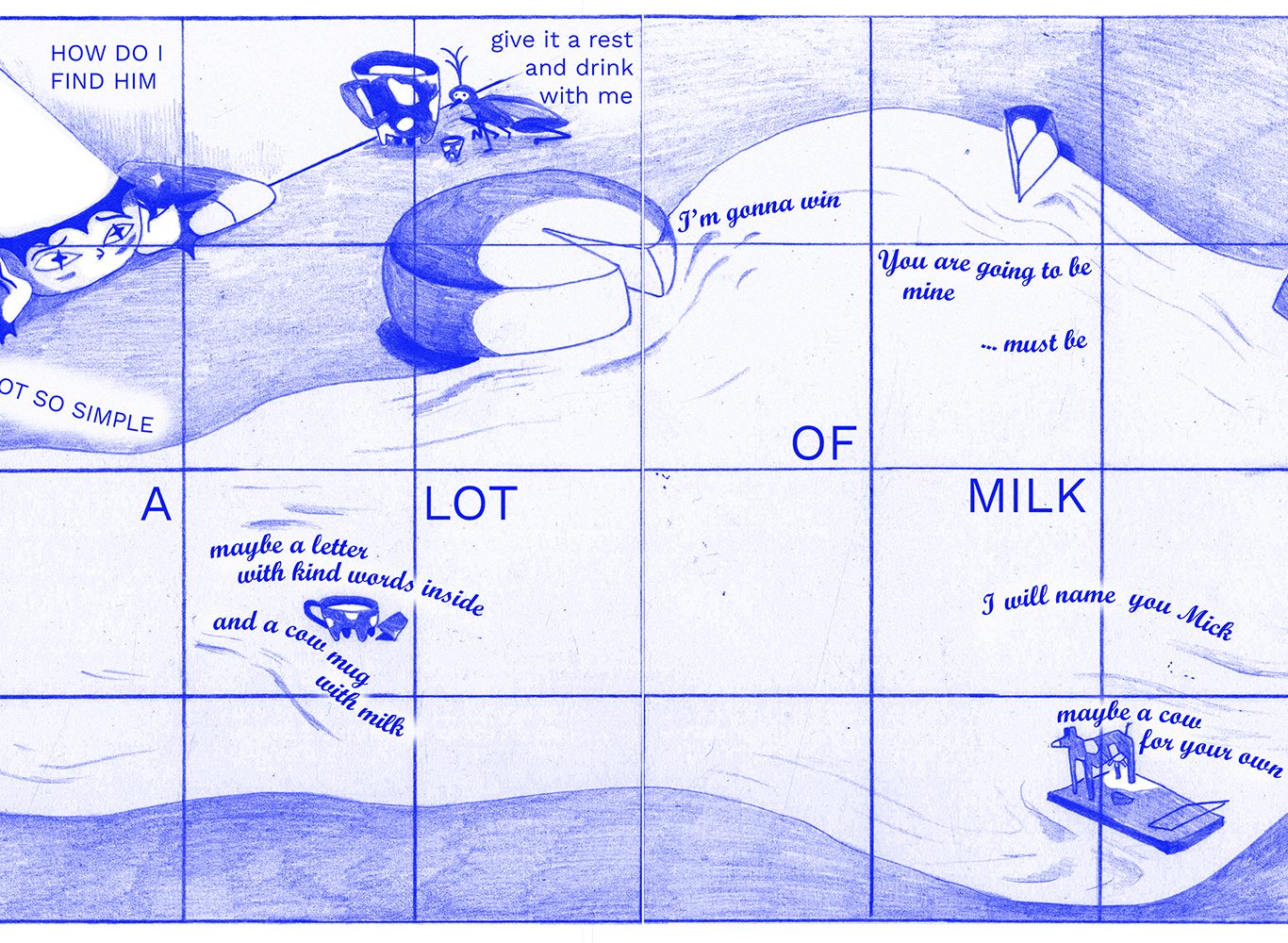

“Comics have lent me more confidence to experiment” – Interview with Nikoletta Veress
A witch falling hard for a mouse – this is the story of Nikoletta Veress’s comics Much Needed Love in a nutshell, though of course there is a lot more to it. Nikoletta received an accolade as a first-time comic book creator at the 18th International Comics Festival Budapest for her comic book, which incorporates many exciting graphic design, typographical, and binding solutions. Meanwhile, she is working full steam ahead on her animation masterwork at the Moholy-Nagy University of Art and Design, so we took the opportunity to discuss comics, animation, lessons learned, and goals with her.
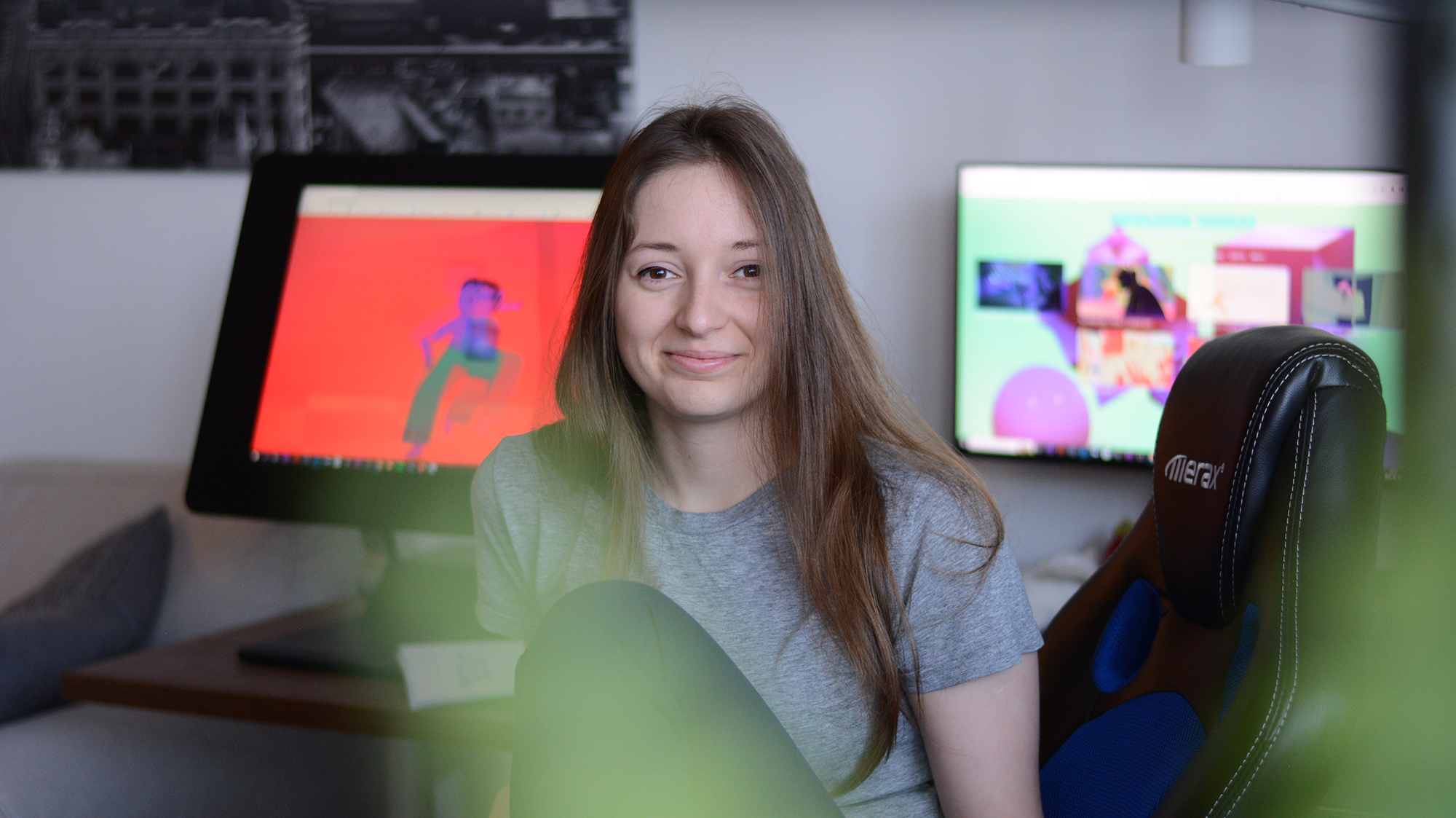
Much Needed Love is unusual in more than one respects. Earlier you referred to it as a folding comic book. Can you explain a little what that means exactly?
The comic book has a square format and 32 pages, with 8 pages folded in half or a quarter, and the reader needs to unfold them as they progress through the story. This doesn’t interfere with the linearity of the storyline – on the contrary. And I wanted this to serve a purpose, rather than just being an unusual design solution. So when peering inside a cauldron for example, you can literally do it by unfolding the pages to see what’s inside.
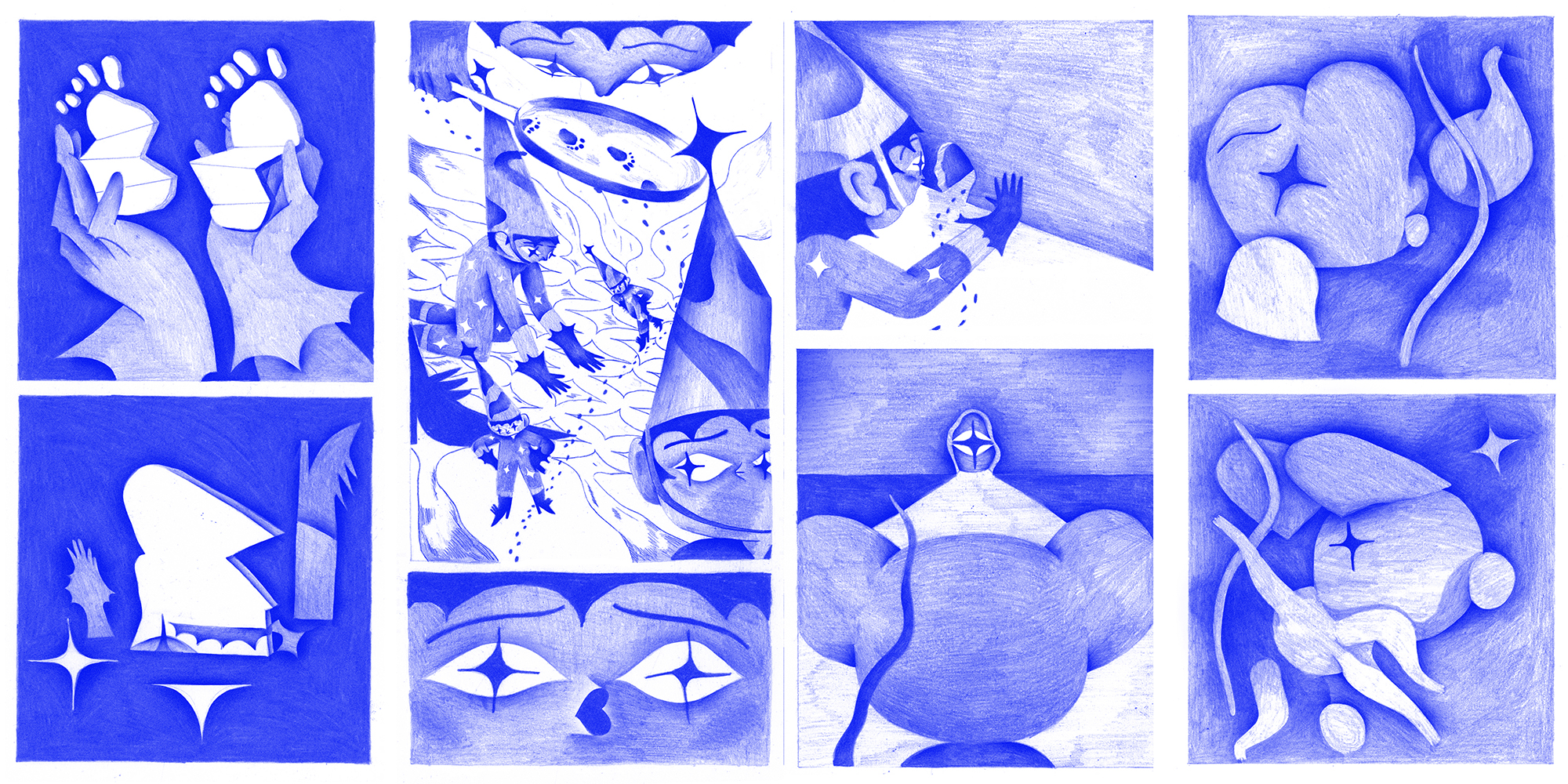
You seem to have prioritised design solutions from layout and typography to drawings and subtle memes throughout the creative process. Was it part of your concept or did you just surrender to the flow?
I wanted a simple story with emphasis on design plays. Though if you pay close attention, you’ll discover that the story is not all that rosy. I wanted to design a comic book where I am not boxed in by the limitations set by the panels and playfulness takes priority. I gave myself absolute freedom when creating it.
You are in the middle of completing your diploma project. The relationship of narrative and visual style must be an important point there too. In many cases there seem to be a nearly palpable line between a dramaturgically mature and an auterial approach. What is your take on this?
Yes, I’ve definitely experienced this first hand ever since I started doing the animatics for my diploma film. I’ve always liked visually-focused scenes in films with an important graphic point to make. My diploma film starts off with a linear story that I spice up with smaller but all the more important images expressing emotions. At some point the focus shifts from the linearity of the story to depicting a state. I haven’t made this move in animations yet, but comics have lent me more confidence to experiment also in my diploma film. Essentially, what I do in the film is alternate between guiding viewers closely and then letting go of them for a little while. That’s what I’m playing with nowadays, in constant consultation with dramaturge Kinga Keszthelyi.

There are more and more young animation artists experimenting with comics. From your generation, Kornél Pitmann and Bence Musinszky come to mind. What do you get out of designing comic books? How did you get involved in it?
I’ve always admired animation artists whose style also worked in comic books. Bence and I were in the same year of the BA programme and we visited many comic book stores together. He was the person with whom I shared my first attempts at making comics, though they just clearly didn’t work. They were more like pages of an illustrated publications than an actual zine or comics. Working with simple shapes and colours, I felt there was something missing, that they did not work in individual panels. I had difficulty finding some middle ground.
And what helped you find it in the end?
At university I took an optional comics course held by Eszter Szép. We had many playful assignments, and there were also excerpts from various graphic novels that we were required to read, write about and discuss in class. At the end of the semester we had another comics-related assignment, and I drew a longer comic book about an ant, but I was dissatisfied with it and so it never went to print. Beyond the course, a great deal of comic book reading led me to eventually enjoy the same level of carefreeness in creating comic books as with animations.
Much Needed Love was your comic book debut. What’s next? Do you already have something new in mind, or are you putting all your energy into animation?
I was so pleased by all the positive feedback Much Needed Love received, whether verbal or facial. 60 copies were printed, and only half of them are sitting on my shelf. Currently I have two comic book ideas complete with subject and story. It will be a little different but also experimentational and riso printed but with more colours. Right now though, seeing my diploma film through is my first priority.
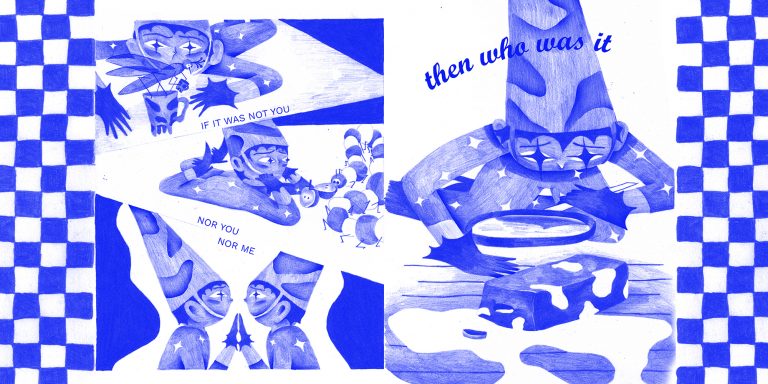
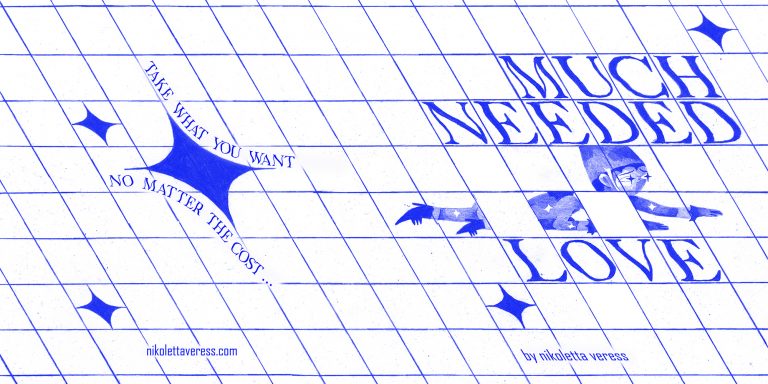
// /
Check out Nikoletta’s further projects HERE
